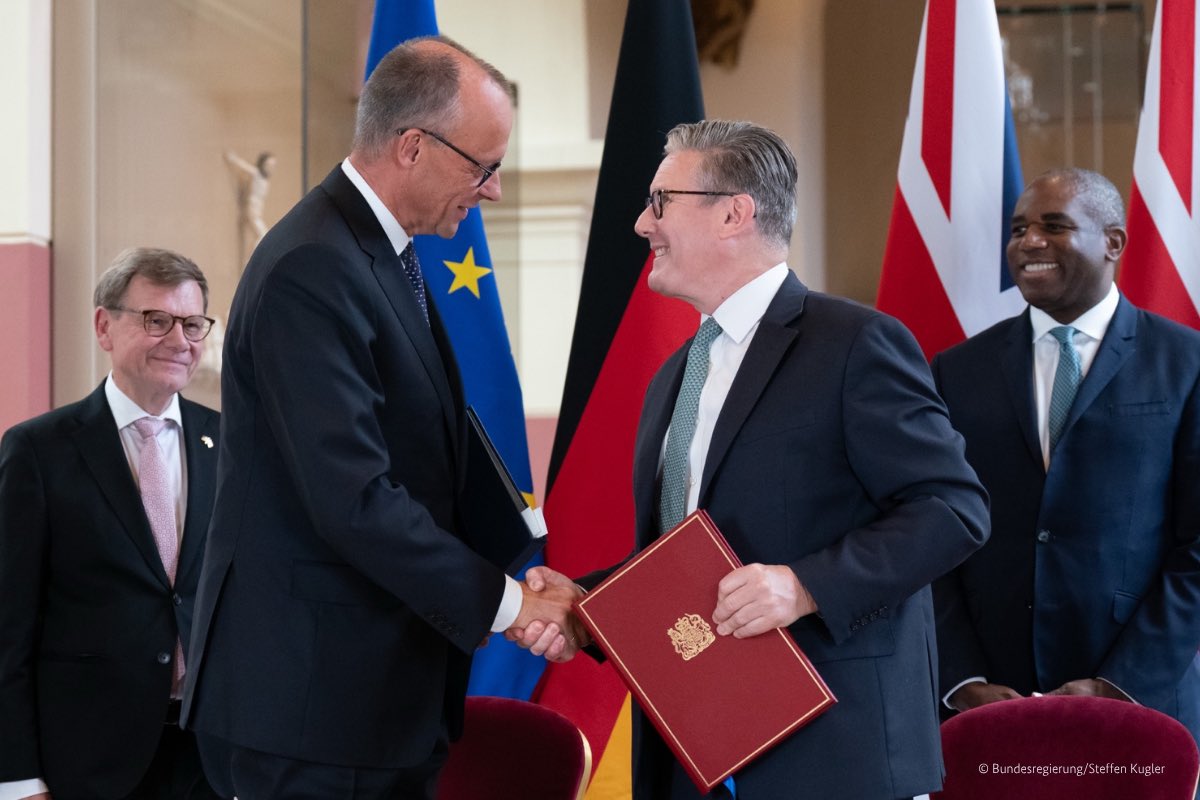London, United Kingdom
In an event not witnessed since the aftermath of the Second World War, British Prime Minister Keir Starmer and German Chancellor Friedrich Merz signed the Kensington Treaty this Thursday – an ambitious accord on defence, cooperation, and strategic realignment that strengthens a crucial geostrategic axis in Europe: London–Berlin–Paris.
The ceremony, rich in symbolism, was held at the historic Victoria & Albert Museum, in an atmosphere some have compared to the gravity of signing a peace agreement. “This is a historic day,” declared Chancellor Merz. “Today, we open a new chapter in the UK-German relationship.” Starmer, for his part, described the treaty as “an unprecedented pact that lays the foundations for stability in an increasingly dangerous Europe.”
Mutual Defence in the Face of Attack: Echoes of Post-War Determination
At the heart of the treaty lies a resolute commitment. A key clause stipulates that both nations affirm their “profound commitment to mutual defence” and pledge to assist each other, even by military means, if faced with an armed attack. While this aligns with their obligations under NATO, it signals a deeper and more operational bilateral bond not seen since the latter half of the twentieth century.
“Aware of our closely aligned vital interests… there is no strategic threat to one without it being a threat to the other,” the document asserts.
The treaty extends the formalisation of the Trinity House Agreement of 2024 – but on a grander scale: it encompasses joint development of armaments, terrestrial systems, close cooperation on the BOXER armoured vehicle programme, and a shared platform for creating long-range precision strike capabilities (exceeding 2,000 km).
From Brexit to New Alliances: Reconstructing Continental Bonds
The signing of the Kensington Treaty represents a significant geopolitical pivot. In the wake of years of post-Brexit isolation, the UK is re-aligning itself with Europe’s political–military core by cementing a strategic bloc alongside France and Germany. This emerging “European E3” is moving towards enhanced coordination on security, migration, and economic policies.
Furthermore, the British–German accord comes just a week after French President Emmanuel Macron’s state visit to the United Kingdom, during which progress was made on nuclear coordination and joint deterrence measures. Next week, Chancellor Merz is expected to host Macron in Berlin, thus solidifying a tripartite European framework in response to global challenges.
Beyond Defence: Youth, Migration, Energy and Border Cooperation
The Kensington Treaty does not limit itself to military matters. It sets forth 17 tangible projects, including:
- Bilateral youth and university exchanges, fostering academic mobility.
- Enhanced border access with electronic passports for frequent travellers.
- Joint cooperation in clean energy and the development of new energy infrastructure.
- A coordinated approach to combat illegal migration, with Germany committing to legislate measures to curb criminal networks operating from its territory towards England.
Pivotal Moment in European Security Architecture
The pact underscores the commitment to upholding the Euro-Atlantic order, reaffirming both nations’ loyalty to NATO while denouncing the rising tide of “hybrid threats” and “strategic competition” that imperils liberal democracies.
“Security is the thread that runs throughout this treaty,” Merz asserted, emphasising that this document will shape the bilateral relationship for “many years and decades to come.”
Although this strategic dynamic is not intended to exclude other European partners, Merz was quick to note that “Poland, Italy, and our smaller European partners remain very much in our thoughts.” This suggestion hints that the treaty could well serve as a cornerstone for deeper strategic integration across the continent









